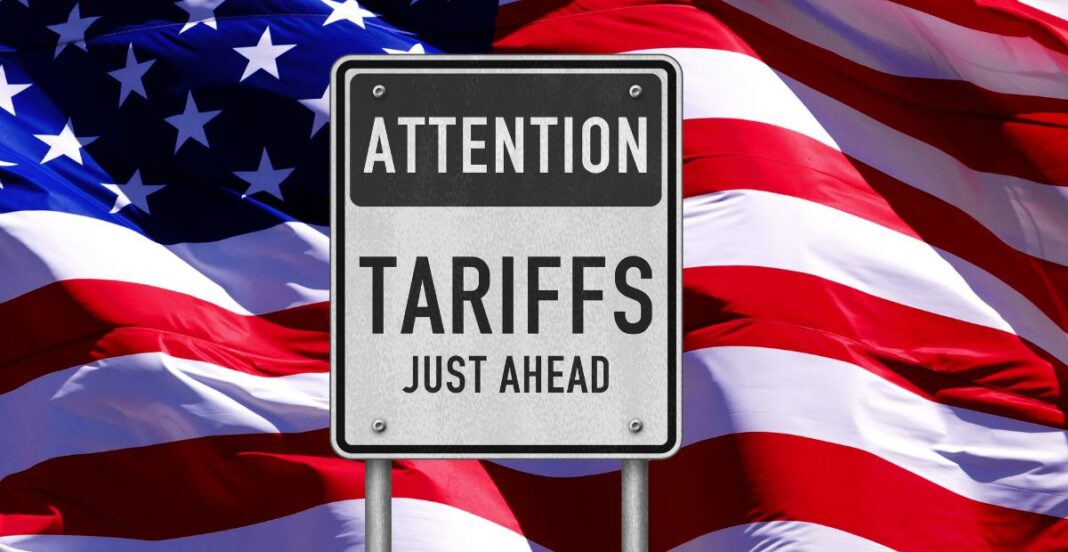As for now, the United States has entered yet another line of fight in the globe commerce battle by placing reduction tariffs on important textile and clothing exporting nations. Effective from April 9, 2025, this action – declared by President Donald J. Trump – seeks to restore balance in trade and uplift US industry. In any case, the repercussions of the new tariffs are bound to upset the global textile industry and set off very strong reactions from trade allies.
Table of contents
Impacts of New Tariffs on Global Trade
Bangladesh – 37%
Cambodia – 49%
China – 34%
Dominican Republic – 10%
European Union – 20%
Honduras – 10%
India – 27%
Indonesia – 32%
Pakistan – 30%
Sri Lanka – 44%
Turkiye – 10%
Vietnam – 46%
According to the statement issued by the White House, the aforementioned tariffs were placed with the intention of eliminating the inequitable trade benefits offered by foreign manufacturers to American producers and bolstering goods produced within the United States.
Trump’s Concerns Regarding The Market Changes
In his address concerning the tariffs, President Trump said that:
“These actions contain the unfair trade activities which have been hemorrhaging American jobs for decades. It is time to give equal opportunities to Americans; support American enterprises, and compel foreign countries to treat us properly.”
According to the administration, the United States has had some form of a manufacturing sector since the early 2000s. They have been suffering from a drop in employment as well as production. The new tariffs are meant to achieve these objectives by banning cheap foreign goods and stimulating the local market.
Which Countries Stand To Lose The Most Export Market?
India (27% Tariff)
India, one of the most influential textile exporting nations in the world, now has a target of 27% on apparel export to the US. This upsurge in doings could cause enormous revenue damage to Indian producers who have depended on the US for years. Modi’s Government has voiced concerns and domestic business owners have sidelined the agendas at hand to focus on claim to softens the blow.
China (34% Tariff)
The new 34% tariff China added will inflict more damage on its already struggling textile sector, especially with the ongoing trade war it has with the US. This is likely to speed up the move of the region’s manufacturing base to other Southeast Asian countries, although given the high tariffs on Vietnam and Cambodia, there are few other options.
Vietnam (46% Tariff) & Cambodia (49% Tariff)
With the US and China at war, both Cambodia and Vietnam emerged as new recipients of textile production. Now, they stand at some of the highest tariff brackets. The brands that shifted production to these locations will require a serious reconsideration of their supply chain strategies.
European Union (20% Tariff) & Turkiye (10% Tariff)
The two major suppliers of textiles for the US, the EU and Turkiye stand as relative “winners.” However, they haven’t proposed any strategies to counter the tariffs. EU officials have warned that if the negotiations do not come through, the block may, leave sanctions on European goods.
Sri Lanka 44% Tariff & Pakistan 30% Tariff
Having Sri Lanka and Pakistan as countries of interest marks their vulnerable position as their economies are primarily focused on the exports of textiles and apparel. Pakistani producers are worried about losing revenue from exported goods, and Sri Lanka’s garment sector is grappling with what might be one of the toughest challenges of the last decade.
Responses from Other Markets
Global Trade Partners
A number of countries have come out in public against these tariffs, with many of them calling for diplomatic discussions. The European Union has made clear that it is contemplating retaliatory tariffs if the United States continues with this position.
India’s ministry of commerce put out a statement stating:
“We request the United States to reconsider these tariffs since they will have adverse consequences on small and medium businessmen and industries in both nations.”
Prospects for US Consumers and Businesses
As much as the duties are meant to help American manufacturers, they also create problems for most US businesses and consumers. Most American fashion labels need access to low priced goods to maintain their price points. Consequently, because of the increased duties retailers will:
- Be forced to increase the price of apparel and textiles.
- Experience disruptions to their supply chains.
- Cut back reliance on imported goods which might lead to shortage of their stock.
Expert Analysis
Trade experts have warned that these tariffs could increase inflation risks for the U.S. economy. Sarah Johnson, an international trade economist, added:
“It is true the tariffs will likely increase local production, but Americans will bear the burden of higher costs. Retailers will need to raise their prices which will increase the retail price of clothing.”
What’s Next for Global Textile Trade?
Shifts in Manufacturing Locations
With escalating costs in important manufacturing regions, companies may begin seeking new places to locate their production. Latin American nations such as Mexico and Brazil may receive increased funding as brands look for alternatives to taxes on imported goods.
Revival of US Textile Manufacturing?
The government of the United States hopes to stimulate a renaissance of domestic textile production through these tariffs. Experts, on the other hand, argue that simply implementing tariffs will not be sufficient; there needs to be investment in infrastructure, workforce development, and automation to make truly competitive industries.
Possible Trade War Escalation
The possibility of retaliatory taxes is a real threat. The potential for these kinds of tariffs imposed on American goods by countries such as India, China, and the EU could further deteriorate global trade relations, having negative consequences on a range of industries outside of textiles.
Conclusion
The United States’ implementation of harsh reciprocal tariffs on the imports of textiles and apparel has affected the global economy tremendously. Although the US aims to increase domestic manufacturing, the move is likely to result in strained international relations, dire impacts on the economy for crucial importing countries, and a heightened cost of living for consumers.
As the new tariffs are implemented, there will be a shift in business operations and policies alongside government and consumer behavior. The next few months will be essential in deciding if the intention of the tariffs will be met or if it will throttle a new wave of global economic conflict.


